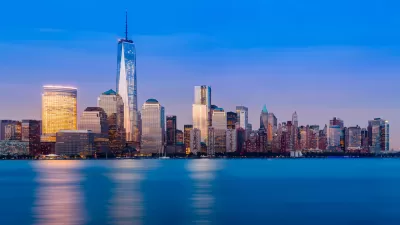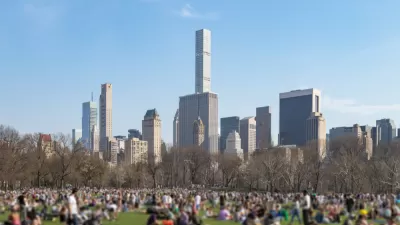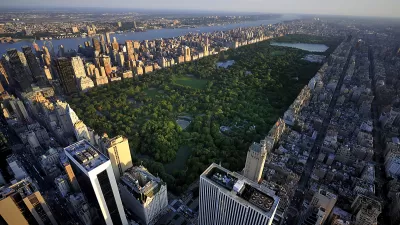Kicking off its in-depth examination of the ways in which New York City has been remade during Mayor Bloomberg's tenure, Matthew Schuerman looks at the city's astonishing vertical growth, a significant feat considering the shadow of 9/11.
"In research conducted for WNYC, NYU's Furman Center for Real Estate and Urban Policy determined that new buildings constructed between 2000 and 2010 were taller - in terms of the number of floors - than those built during the previous decade - in all but six of the city's 59 community boards. Those increases can be found in areas where zoning rules had been changed to accommodate taller buildings, such as downtown Brooklyn, as well as areas that saw no rezonings, such as Washington Heights and Inwood, where developers took advantage of old zoning rules that allow buildings to be much bigger than they were."
During Bloomberg's tenure, 7 of the city's 20 tallest buildings were constructed.
"Real estate developers say the biggest reason they built bigger and taller was because Mayor Bloomberg projected the sense that the city had a future, and that the future looked bright (at least to them and the people able to afford the 360-degree views from atop their towers)," explains Schuerman.
"Francis Morrone, an architectural historian and author of the forthcoming Guide to New York City Urban Landscapes, said he appreciates that Bloomberg is trying to keep pace with London and Shanghai in the competition for global companies. But Morrone said the mayor's growth agenda also has a major downside. He cited a 2009 study by the Center for an Urban Future [PDF] that argued that tens of thousands of middle-class New Yorkers were leaving the city because of the high cost of living."
"The city is going to survive. The city is going to thrive," Morrone said. "Not all the people in the city are going to thrive, or even continue living here."
Other entries in the "New York Remade" series have looked at the Mayor's efforts to expand affordable housing and lengthening commutes for the city's poorer residents.
FULL STORY: New York, the Vertical City, Kept Rising Under Bloomberg

Planetizen Federal Action Tracker
A weekly monitor of how Trump’s orders and actions are impacting planners and planning in America.

Chicago’s Ghost Rails
Just beneath the surface of the modern city lie the remnants of its expansive early 20th-century streetcar system.

San Antonio and Austin are Fusing Into one Massive Megaregion
The region spanning the two central Texas cities is growing fast, posing challenges for local infrastructure and water supplies.

Since Zion's Shuttles Went Electric “The Smog is Gone”
Visitors to Zion National Park can enjoy the canyon via the nation’s first fully electric park shuttle system.

Trump Distributing DOT Safety Funds at 1/10 Rate of Biden
Funds for Safe Streets and other transportation safety and equity programs are being held up by administrative reviews and conflicts with the Trump administration’s priorities.

German Cities Subsidize Taxis for Women Amid Wave of Violence
Free or low-cost taxi rides can help women navigate cities more safely, but critics say the programs don't address the root causes of violence against women.
Urban Design for Planners 1: Software Tools
This six-course series explores essential urban design concepts using open source software and equips planners with the tools they need to participate fully in the urban design process.
Planning for Universal Design
Learn the tools for implementing Universal Design in planning regulations.
planning NEXT
Appalachian Highlands Housing Partners
Mpact (founded as Rail~Volution)
City of Camden Redevelopment Agency
City of Astoria
City of Portland
City of Laramie





























